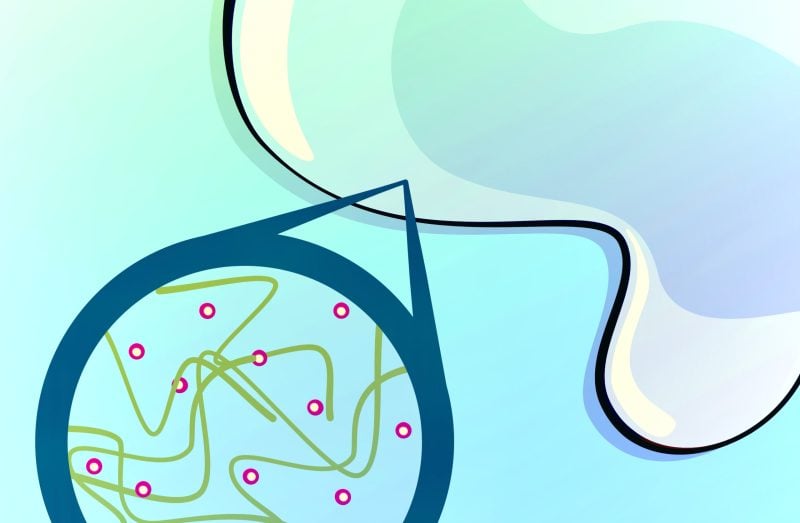Abby Grosskopf, a fourth-year chemical engineering Ph.D. student studying complex biomaterial systems for drug delivery, bioprinting and more, recently found herself in an argument with a staff member at FedEx — not about shipping costs or delayed arrivals, but about the liquidity of gels.
FedEx claimed her package contained a liquid and therefore couldn’t be shipped, but Grosskopf said that “if you measure it, it’s much more solid.”
The applications of “grey-area solids,” known as hydrogels, extend further than shipping difficulties, however: They’re becoming increasingly useful in projects across engineering, medicine and environmental sustainability as she continues to research in the Appel Research Group, led by material science and engineering professor Eric Appel.
Appel’s team explores an extension of chemistry focusing on “assembling molecules in specific and controllable ways,” as Appel described. Their work with hydrogels in particular opens doors to many applications that are becoming increasingly relevant for the safety of both plants and people.
One of Appel’s aims is to protect plants in areas likely to suffer from devastating wildfires. Appel described the project’s extensive design in Stanford bioengineering professor Russ Atman’s podcast, “The Future of Everything.” His team needed to consider how to easily synthesize the gels and spread them as a thin film without being washed away in heavy rains.
His team eventually designed biodegradable cellulose-based hydrogels that can safely cover trees and other plants to make them more fire-resistant. Perimeter Solutions, a company focused on preserving plants in areas prone to fires, later acquired both Appel’s technology and his company, LaderaTech. Perimeter Solutions plans to distribute the gels on wildfire-prone forests.
The process of engineering gels for fire retardants can provide important improvements in adjacent fields as well, according to Appel.
The Appel Research center also includes the production of slow-release vaccines, or inoculations that use viscous gels to extend the exposure of a vaccine to the immune system. A controlled release system allows the body to create more effective antibodies, potentially prolonging the efficacy of the vaccine.
But this project faces several obstacles, including finding a way to preserve the molecular integrity of the gel as it is pushed through a tiny needle. “The force you’re applying can peel apart that supramolecular Velcro and break the gel apart,” Appel said. To overcome these hurdles, the project needs the help of mechanical engineering to create the correct physical properties, and the help of medical expertise to ensure the injection and gel is safe for prolonged exposure, according to Appel.
Grosskopf highlighted the importance of an interdisciplinary approach to science in combating the obstacles by noting the roles various fields play in the solution: chemistry helps in “sizing the polymers,” physics in exploring how these “polymers interact to form a gel,” biochemistry in “encapsulating proteins and looking how they diffuse inside the gel” and even materials science helps to work with these “funky materials,” she said.
Brigette Schmittlein M.S. ’21 also said that her educational background in multiple subjects aided other projects in the Appel lab. The “undergraduate degree in mechanical engineering contributed to an understanding of mechanical properties of materials, characterization methods and how these hydrogels interface with medical devices and consumer products,” while the “master’s degree in materials science has helped me better understand the structure-versus-function relationships for chemical components within the hydrogel,” Schmittlein said.
Appel echoed the importance of interdisciplinary approaches in scientific innovation. “Innovation happens at interfaces,” Appel said. “It’s when you see expertise from one area being able to solve problems that exist in another area.”
Hydrogels have incredibly important applications, as the planet is increasingly ravaged by wildfires and new virus variants, according to Appel. But these groundbreaking discoveries and inventions thrive at the junction of various fields and require both a diversity of hydrogels and diversity of people.
“Stanford is the perfect place for science like that, because you can’t do interdisciplinary science alone,” he said.
